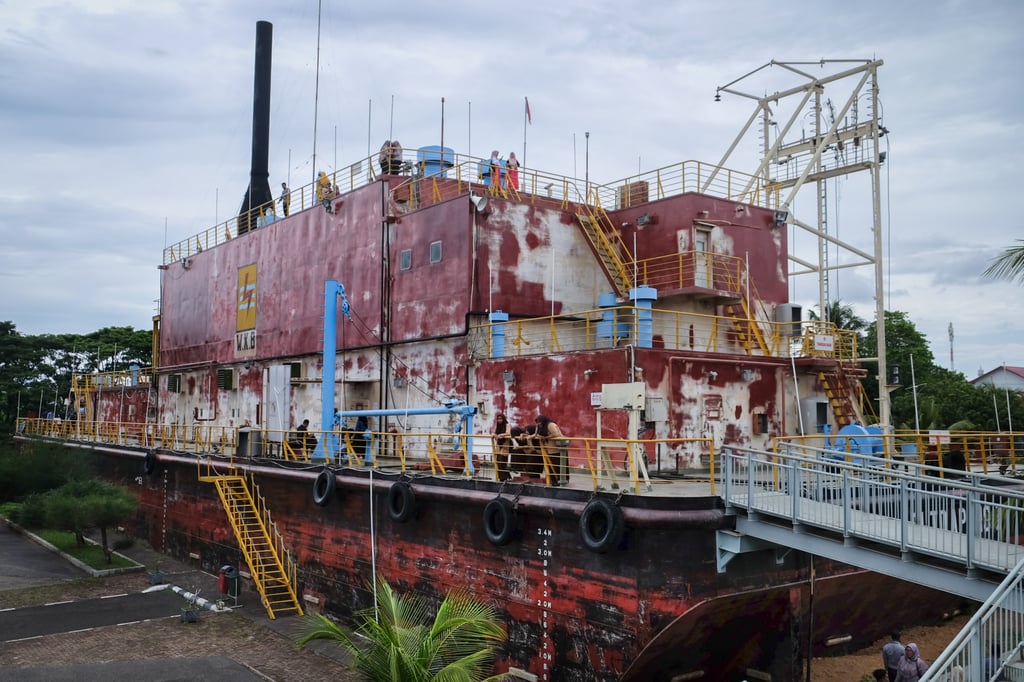Advertisement
20 years after the tsunami: Aceh, Indonesia’s strict Muslim province, is opening up to the world, with arty cafes and ATMs that take Visa, Mastercard
- Aceh was hit hard by the 2004 Indian Ocean Tsunami and relics of the disaster dot the capital Banda Aceh. The province has also made news for hardline Islamism
- But a trip into the forested interior along well-paved roads affords encounters with rare wildlife, great coffee, nature and places where tourists can draw cash
Reading Time:6 minutes
Why you can trust SCMP
0

“You see that line over there?”
An old man sitting next to me, wearing a sarong and Muslim skullcap, points at a horizontal yellow line etched about two metres from the ground on a wall. “It reminds us of how high the water surged.
“It was only for a few hours, but we can never forget.”
Beside me and this 2004 Boxing Day tsunami survivor, the massive Kapal Apung barge looms above what was once a neighbourhood in the city of Banda Aceh, the capital of Indonesia’s westernmost province, Aceh.

On that fateful day, waves more than 30 metres (100 feet) high lifted the 2,600-tonne electric generator barge from a point a few kilometres out to sea and flung it down on this plot of land, crushing homes and lives under its deadweight. It’s been here ever since.
Banda Aceh was the closest built-up area to the epicentre of the tsunami that laid waste to areas of India, Sri Lanka and Thailand, and the first to be hit. Of the 230,000 people who died in the catastrophic event, 170,000 were in Banda Aceh and its surrounding areas.
Advertisement
Select Voice
Choose your listening speed
Get through articles 2-3x faster
1.1x
220 WPM
Slow
Normal
Fast
1.1x
